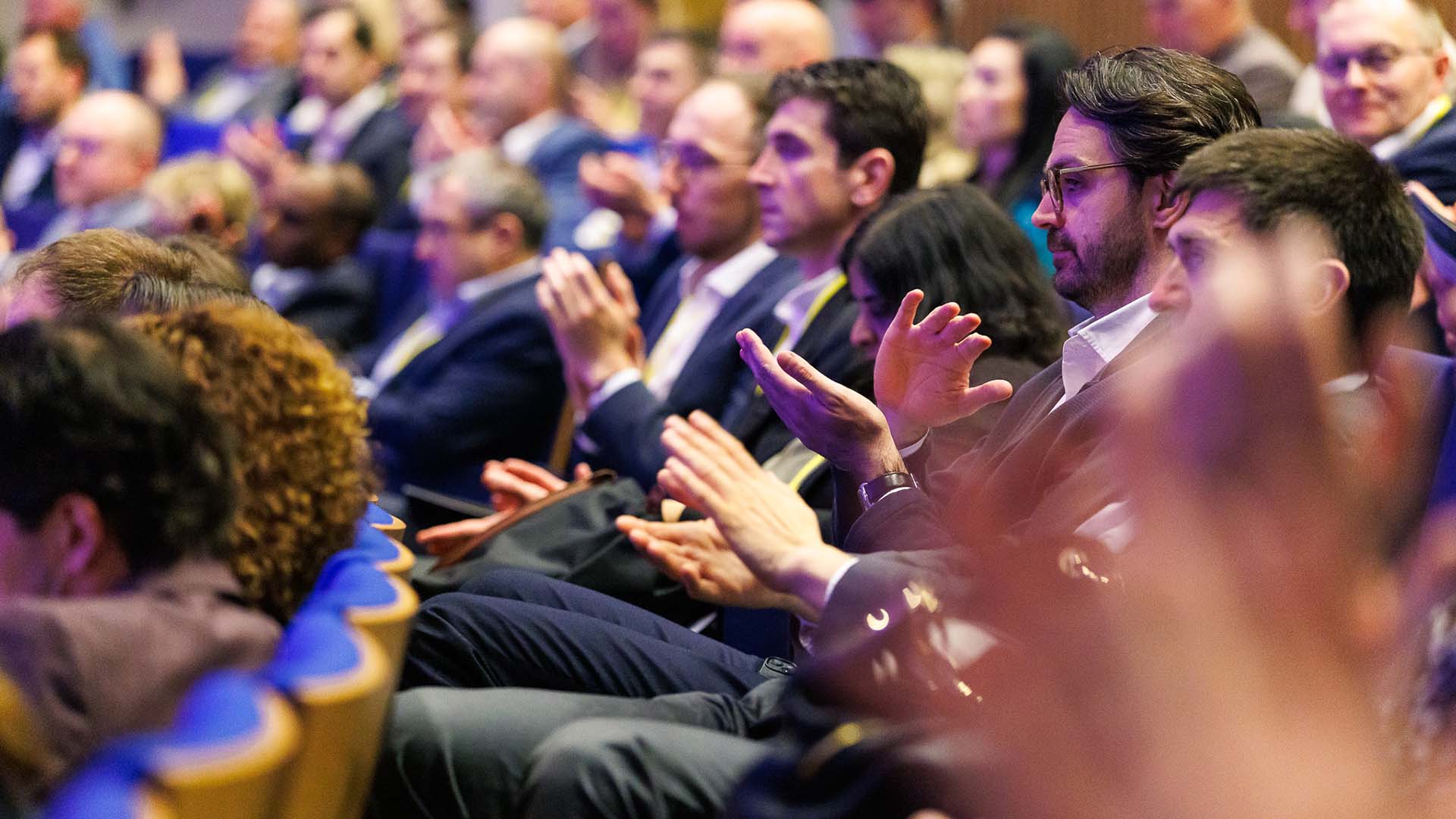
EACT has launched its Treasury Survey to determine top priorities for corporates. It also aims to identify challenges corporate treasurers of Multi-National Companies (i.e. MNCs) are facing and the technological innovations they intend to implement. The survey also aims to recognize evolutions over time and after crises.
The EACT survey attempts to detect treasury trends and priorities for multinational companies over the coming 12 to 24 months. As expected in this turbulent year, Cash-Flow Forecasting, i.e. > 13 weeks / monthly rolling forecasts (#1) is leads the charts, followed by the Long-Term funding (#2) and finally Treasury technology infrastructure review / replacement of existing IT tools (#3). It is followed by a few priorities at near equal levels, such as Capital Structure (#4), Market Risk, i.e. risk management (#5); Working Capital Management Optimization (#6), Digitization of Treasury (#7), and Political Uncertainties (#8).
This year, change is significant. Fundamental and pure financial issues are back at the forefront of the treasurers’ priorities. How do I enhance my cash-flow forecasts? How do I secure my LT funding (capital markets versus bank financing)? Should I revisit and enhance my IT treasury architecture by replacing current TMS and simplifying the number of solutions? Mitigating market and FX risks remains a key issue. as well as optimizing working capital.
Cash-Flow Forecasting is still high on the list of priorities. It can also be noted that treasurers are more focused on replacing or implementing a TRMS than on digitizing and hyper-automating cash management, the next steps requiring a certain level of digital maturity. The impact of new technologies should not be overestimated, as many treasurers are still struggling to improve or replace a TMS or bank communication tool. All in good time, as the wise man would say... Finally, we note that the structure of financing, especially long-term financing, capital, the improvement and optimization of working capital requirements, as well as market risks (due to the hyper-volatility of markets caused by the geopolitical context) have climbed the treasurers' priorities ladder. This return to the basics and foundation of our trade is by the uncertain, volatile and changing environment in which we operate. The Capital Market Union (i.e. CMU) or the new project of SIU (i.e. Savings Investment Union) takes on their full meaning with the aim of offering alternative sources of financing. The “real economy”, in Europe must diversify their sources of financing. The ranking of Capital Structure in number 4 also shows that the (re)capitalization of MNCs is critical, and that maximizing WACC (i.e. Weighted Average Cost of Capital) should perhaps be reconsidered in favor of "optimization". In seeking to maximize the WACC, we have become too sensitive to economic downturn or sudden sharp swings in interest rates.
Corporate Treasurers need to refinance their companies, to increase visibility on future out and in-flows and to revamp their capital structure, prior to addressing the digital transformation of the Treasury Function. Working Capital optimization and banking relationships are highly ranked as well. We should never forget that bankers remain (if not the first at least) one of the top suppliers of the real economy. Finally, it should be noted that New Financial Regulations, despite their huge number and potential impacts on treasury, are rank rather low. EACT’s continuous work does advocating and defending treasurer’s best interests may explain why regulatory ranks as a low priority. On the other hand, Market Risk seems to be back on top priorities (i.e., #5) because of the continuing sensitivity and volatility of markets. Trendy topics such as ESG, regulations, digitalization of treasury and robotization, or fraud mitigation are seen as of secondary importance. Finally, the lower ranking of the topic “digitization” of treasury can probably be explained by a more immediate concern to first review the existing architecture and/or implement another TMS before even thinking about using AI and other cutting-edge digital technologies.
In terms of technological innovations, it appears that the priority will be quasi equally placed on Data Analytics and switch to cloud solutions (i.e. private or public clouds). RPA’s and AI solutions come next and are followed by recourse to Treasury as a Service (TaaS), We can notice that crypto-currencies, AI and DLT derived technologies are ranked lower. Here again, there are no real significant changes in the top technologies compared to previous years. Despite the hype, the low ranking of AI comes from a general absence of true data lakes and standardized pieces of information. It looks like treasurers have many other technical priorities before being able to use the newest technologies. They may want to first fix current systems around TMSs, enhance current IT architecture and hyper-automate processes further before using AI. To sum up, treasurers seem to be lucid about their ability to adopt these new technologies. They are aware that they will not use them as quickly as is generally thought, for various reasons (e.g. lack of standardized data, too many processes still manual, too great a fragmentation of IT tools in use, too many banks, banking connectivity not sufficiently harmonized, insufficient budgets, etc.).
Surprisingly, Real-time reporting and dashboarding are the focus for treasurers in the next 12 to 24 months (#1), followed closely by Real-time liquidity (#2), and then Real-time Payments & Collections (#3), then by APIs (#4), FX Automation (#5) and finally the FinTech’s (#6). This demonstrates, once again, that the priorities may be more basic than imagined, as many treasurers still need to improve their day-to-day management before jumping into the use of newer technologies. The objective is immediacy - real-time for all types of information. Currency Management Automation (i.e. CMA) for FX Management is also in 5th position, as here again, we seem to be far from complete and perfect automation.
On the question of which technology will be of most interest in the next 12 to 24 months, access to real-time information is in the leads. It is followed by real-time liquidity. This is explained by the current economic situation, corporates with access to information can react faster, giving them a competitive advantage in an increasingly dynamic environment (we can see that immediacy and the time factor have become crucial, at least for certain industries and B2C businesses). Real-time Payments & Collection and finally immediate (automated) management of foreign exchange risk are also important for enhancing and hyper-automating treasury management. The fact that there still are lots of highly manual processes around FX and commodity management creates pressure for further automation to achieve greater efficiencies and internal controls. We also noticed the 6th position of FinTech’s (higher than last year) with multiple innovative solutions. These FinTech’s may give Treasurers the right tools to change their ways of working. Things are gradually but slowly changing and recourse to FinTech’s is more and more usual for treasurers to complement their treasury solution suite.
The fragmentation of IT systems in treasury and the complexity of IT architectures in many of MNCs’ treasury departments explains the importance allocated to the risk of fraud, which has increased in recent years, and of cyber risk. Fragmentation increases these risks by a lack of fluidity, homogeneity, and sometimes consistency of the financial data to be processed. Furthermore, it is detrimental to the quality of future cash flow forecasts. The more IT solutions are in use, the more difficult it becomes to consolidate data and to allow systems to interact with each other, or to exchange data. The more complex the IT set up of the treasury, the more complicated the change will be/appear to be. Treasurers would like to change the IT organization but sometimes do not dare to tackle the cliff that this represents.
The question of the greatest challenge facing the treasurer is interesting in understanding what treasurers will need to prioritize. It appears that the difficulties in standardizing processes (1#), Difficulties in standardizing processes and enhancing internal controls; (#2), lack of budget; (#3) the lack of (internal) human resources; (#4) inaccurate cash-flow forecasting, are the main concerns of treasurers. Standardizing processes and internal controls remain preliminary and necessary steps to automation, improving the organization of the department, and increasing efficiency (e.g., automatic reconciliation, Straight Through Processing / STP, use of mass data, etc.). The other challenges are the large number of bank accounts and the difficulties in convincing the IT department and CIO of the value of treasury projects.
Cash-flow forecasting and visibility, combined with long-term financing, remain top priorities, even in a declining interest rates environment. The deteriorating economic situation may explain the increased need for refinancing businesses. The results seem to have been reinforced by the long pandemic and the recent conflicts and escalations (which have confirmed the need for further centralization and automation, the two best responses to such crises) and by the fast-growing interest rates and bank crisis of last Spring. The quest for further digitization and the hopes placed in new technologies and innovations are explained by the importance of combating the increasing risk of fraud (ranked higher, as cyber-attacks and frauds significantly increased during the pandemic); the need for strengthening internal controls; by growing economic uncertainties; the need for more efficiency, and by a lack of sufficient (human) resources. The crises have crystallized the need to digitize and accelerate the ongoing transformation. The maturity of technological solutions, more than ever, makes it possible to have greater expectations for improved cash management.
The challenge for treasurers comes not so much from the changes themselves, but from managing the continuum of changes and the co-occurrence and simultaneity of problems on the economic, financial, and regulatory sides. It is clear from this survey that there is still a long way to go to reach a level of mastery of new technologies, real-time operations management, and reduction of inherent treasury risks. Despite the significant shift noticed during these recent crises to digitize and automate treasury processes wherever possible, the survey demonstrates the need for taking treasury to the next level.
François Masquelier, Chair of EACT (European Association of Corporate Treasurers)

The CEE 2025 Treasury Forum, held in Cluj-Napoca, Romania, from 15 to 17 May, gathered financial leaders from across the central and eastern European region to explore the evolving role of treasurers in today’s complex economic environment.
Read
Founded by treasury practitioners, Baltrea is driven by a vision to foster excellence, encourage collaboration, and promote innovation within the treasury community.
Read
The 2025 annual EACT Summit, held in Brussels in April, served as a timely reminder that treasurers across the community possess an increasingly welcome voice in the face of adversity.
Read
The fourth edition of the publication, describes basic requirements and provides guidance on establishing and developing the treasury function.
Read
Starting in 2025, the CSRD is expected to become mandatory for all large companies under accounting regulations. But how is treasury involved in sustainability reporting?
Read